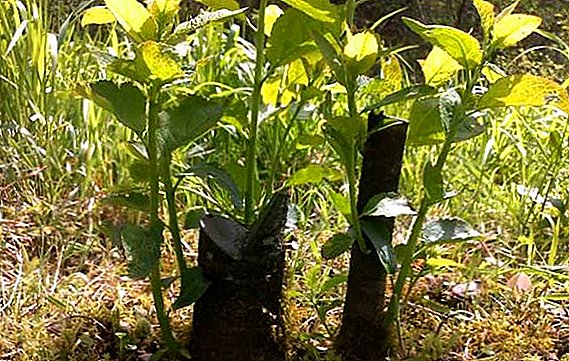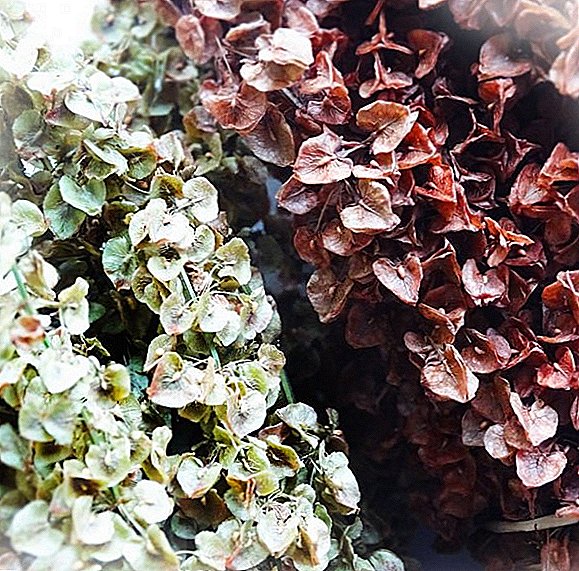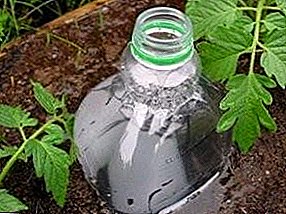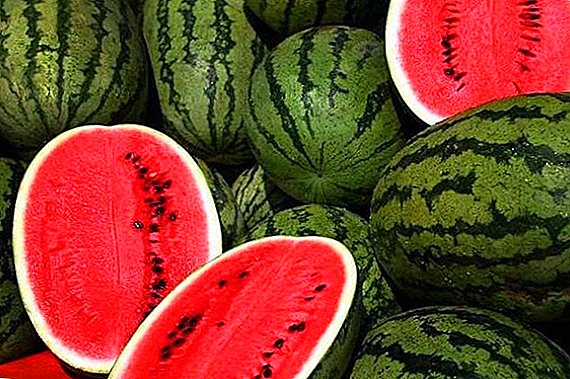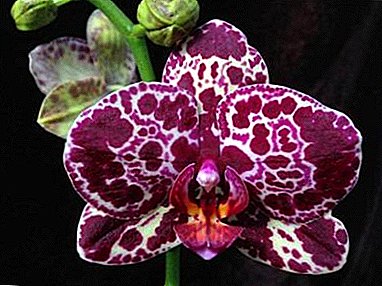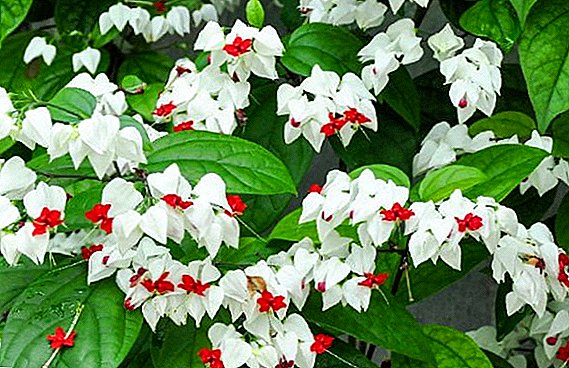 Klerodendrum - a genus of amazing tropical plants, which has about 400 different species. Living in tropical parts of the continents such as South America, Africa, and Asia in the form of lianas and shrubs, these species are half-leaved or evergreen.
Klerodendrum - a genus of amazing tropical plants, which has about 400 different species. Living in tropical parts of the continents such as South America, Africa, and Asia in the form of lianas and shrubs, these species are half-leaved or evergreen.
Plants have very long and flexible shoots, which over time turn into woody thickets. Clerodendrum amazes with incredible beauty with flowering, which has a very long period - all summer. Due to the large number of plant species differ in a variety of shapes and colors of flowers and leaves. Some species are characterized by a delicate pleasant aroma that comes not only from flowering, but also from the leaves of the plant, with each fragrance being unique and not like the others.
You can diversify the usual home plants with the help of popular ornamental types of clerodendrum, such as:
Despite the fact that the klerodendrum is a tropical inhabitant, many of its species are cultivated and used for decorative purposes, decorating not only the house and garden plots, but also the indoor interior.
The most popular inhabitants of home greenhouses are Thompson's clerodendrum and brilliant. Most likely, this is influenced by the specifics of trade (these species are more often sold in flower shops), because other species as well as these two, adapt to housing conditions. Consider the description of each species separately.
Brilliant
Brilliant - so call Wallisch's clerodendrum, which is characterized by shiny "lacquer" leaves. This species was named after the researcher from Denmark, Nathaniel Wallich, who was engaged in the study of vegetation in India. In the wild, this species is common in the mountainous part of India, southern China and Nepal. The decorative effect of this plant also gives an unusually abundant and lush snow-white bloom that appears at any time of the year.
A very heavy flowering is observed in the autumn period. The leaves of this type of plant has a rich bright green color, elongated in length with a slight pronounced toothing along the edges. Small white flowers are collected in inflorescences and are located on long peduncles. The flowering of one cycle lasts up to 2 months: gradually dissolving, small flowers cover separate parts of the plant.  At home, the clerodendrum brilliant grows no more than 50 cm - despite the fact that it reaches a height of two meters in the wild. A characteristic feature of the flower are very long stamens. This culture is grown as an ampelous plant, as it has flexible shoots that are prone to drooping.
At home, the clerodendrum brilliant grows no more than 50 cm - despite the fact that it reaches a height of two meters in the wild. A characteristic feature of the flower are very long stamens. This culture is grown as an ampelous plant, as it has flexible shoots that are prone to drooping.
You will be interested to know what else ampelous flowers can be grown at home.Sometimes the plant may shed its leaves for the winter, but do not rush to throw out the flower - it does not die, in the spring the klerodendrum will again be covered with leaves and soon will delight you with flowering. At home, this plant feels good if you keep the temperature above 18 degrees. It needs quite abundant and frequent watering, spraying and high humidity. Also, this clerodendrum needs bright diffused light. Beneficially transfers pruning, after which new young shoots and flowering form on it.
Did you know? The tree of destiny - this is how the name of the clerodendrum is translated from Latin. Residents of Asian countries, where this shrub grows, claim that it brings happiness.
Bunge
Bungee in the wild grows over 3 meters tall, is a fast-growing liana, common in China. It has heart-shaped dark green leaves with jagged edges, which in sunlight can acquire a shade of purple.
The inflorescence has a dark crimson color, which in the period of blooming of the flower brightens to pink. Large inflorescences protrude above the plant, located on long peduncles. A characteristic feature is the long stamens, which strongly protrude from the middle of the flower. Flowering occurs in the summer. And in winter, klerodendrum can shed leaves if it feels the lack of lighting.  Care for this plant is simple. Bunge prefers a sufficiently warm temperature of stay: not lower than 25 ° C in summer, and not lower than 18 ° C - in winter. Unlike other clerodendrum this species does not require very abundant and frequent watering, it does not tolerate stagnant water in the pan. In winter, watering should be reduced and watered when the soil is completely dry. Bunge is best placed on the eastern or western windows. This species loves high humidity, so it is often necessary to spray it or install a pot with a flower on the drain, which is regularly moistened.
Care for this plant is simple. Bunge prefers a sufficiently warm temperature of stay: not lower than 25 ° C in summer, and not lower than 18 ° C - in winter. Unlike other clerodendrum this species does not require very abundant and frequent watering, it does not tolerate stagnant water in the pan. In winter, watering should be reduced and watered when the soil is completely dry. Bunge is best placed on the eastern or western windows. This species loves high humidity, so it is often necessary to spray it or install a pot with a flower on the drain, which is regularly moistened.
Wheelless (Inerme)
Klerodendrum bezkolyuchkovy in the wild grows in the form of a shrub that is common in Sri Lanka, the tropics of Asia and the Australian continent. The bush has branchy and straight shoots reaching a height of 3 meters. The leaves are oblong, oval with a smooth structure and a smooth edge along the entire length; they have a rich, glossy, light green color. The size of leaves is from 4 to 11 cm.  This flower is characterized by small white flowers that have long light purple stamens. They are located on long peduncles and collected in small umbrella-shaped inflorescences. This type of clerodendrum is quite popular in warm countries. It is planted as a shrub that forms a living fence: it grows very quickly to the required size, it is easy to cut, it is not picky about the type of soil - it can grow even on saline soils in the scorching sun. It does not suffer from droughts, can grow near the sea and withstand salt spray.
This flower is characterized by small white flowers that have long light purple stamens. They are located on long peduncles and collected in small umbrella-shaped inflorescences. This type of clerodendrum is quite popular in warm countries. It is planted as a shrub that forms a living fence: it grows very quickly to the required size, it is easy to cut, it is not picky about the type of soil - it can grow even on saline soils in the scorching sun. It does not suffer from droughts, can grow near the sea and withstand salt spray.
As an ornamental houseplant inerme is used much less frequently. It prefers to grow in a sufficiently lit place, normally tolerates dry air in the rooms and does not require frequent watering.
Important! In winter he needs a period of rest in cool conditions up to 15WITH, and in the summer inerme can withstand high temperatures.
The fairest
Clerodendrum is the most beautiful - a species that is common in the wild in the tropics of the African continent. In open ground in warm countries, the height of this plant reaches 3 meters, and at home the flower grows up to 1 meter. An evergreen plant has an attractive appearance, which is achieved by bright scarlet peculiar flowers. They do not look like flowers of other species, because they have an irregular bud structure, and the stamens, which with their length protrude many centimeters forward, look like insect antennae.
Small flowers are arranged, which are collected in inflorescences, on long and fairly thick peduncles. Also a characteristic feature is a very long flowering - all summer and half of autumn (and sometimes all). The leaves of the klerodendrum are of the most beautiful, heart-shaped, large and wide, slightly glossy and have small villi. Saturated green, sometimes dark green color harmonizes well with bright and abundant flowering. 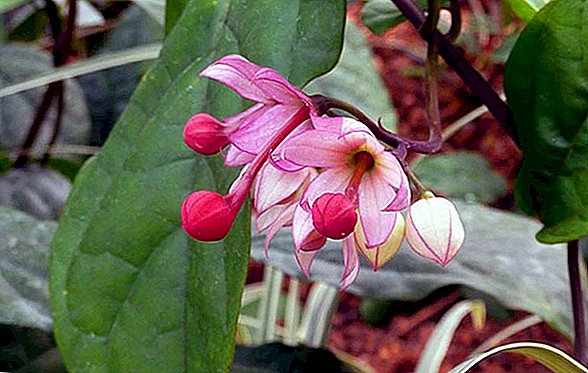 At home, the plant also grows well, but likes the place to be very warm and well lit. The summer temperature for a flower should not be lower than 25 ° С, and in winter it can fall not lower than 20 ° С. Watering prefers plentiful, but does not like stagnant water in the pan. For good growth, the flower must provide a sufficiently high humidity, so you need to spray it several times a day.
At home, the plant also grows well, but likes the place to be very warm and well lit. The summer temperature for a flower should not be lower than 25 ° С, and in winter it can fall not lower than 20 ° С. Watering prefers plentiful, but does not like stagnant water in the pan. For good growth, the flower must provide a sufficiently high humidity, so you need to spray it several times a day.
Thompson
Clerodendrum Thompson is a species that lives in the wild in the tropics of the African continent.
Tropical plants, which can also be successfully grown at home, include alokaziya, striped Achmea, Guzmania, and Monster.This is a half leaf plant that grows in the form of lianas, reaching a height of 4 meters. Young shoots vines curly and flexible, woody with age. The leaves of kleroderndrum rather large, up to 12 cm, have an oval shape and smooth edges, pronounced veins. The color of the leaves is saturated green. Culture blooms profusely and for a long time - from the beginning of spring to the beginning of autumn.
Flowers are collected in inflorescences, in which there are up to 20 small flowers. Inflorescences are located on fairly long peduncles. The flower has a surprising structure: a five-petal base-bract of a snow-white color, above which a smaller red flower rises. Also characteristic feature is the long (up to 3 cm) stamens, which protrude from the flower. Red flowers have a shorter flowering period than bracts, which after the death of the flower persist even before 1 month.  This species is perfectly adapted to living in room conditions. Loves bright diffused lighting, it can be placed on the western and eastern windows. Summer temperatures should not be too high, up to 26 ° C, but in winter, given that the flower is immersed in the period of rest, you must ensure a cool, up to 16 ° C, stay. The flower prefers abundant watering, but it should be done when the soil dries. The plant likes moist air, so frequent spraying will benefit.
This species is perfectly adapted to living in room conditions. Loves bright diffused lighting, it can be placed on the western and eastern windows. Summer temperatures should not be too high, up to 26 ° C, but in winter, given that the flower is immersed in the period of rest, you must ensure a cool, up to 16 ° C, stay. The flower prefers abundant watering, but it should be done when the soil dries. The plant likes moist air, so frequent spraying will benefit.
Ugandan
"Blue butterflies" - this name is more appropriate for this type of clerodendrum. In the wild, the plant is distributed in the mountainous regions of the African continent. It is an evergreen semi-liana, which has long, up to 2.5 meters, thin shoots lignified with time. The plant has leaves with short petioles of a broad-lanceolate form, smooth or slightly jagged. Color of foliage is dark green. Flowers are an exact copy of a butterfly. The four petals in the shape of a butterfly's wings have a blue color, and the fifth follows the shape of a butterfly's torso. It is longer than the other petals, and has a darker color than the others - blue with a blue tint. The stamens are arranged in such a way that they resemble the antennae of a butterfly: they are clearly directed in the opposite direction from the large petal. The stamens are long and slightly bent upwards. The flowers are collected in inflorescences, which are densely arranged on long peduncles.
Ugandan Clerodendrum is considered an unpretentious flower, but still requires some attention and care. The plant loves a well-lit place and is not afraid of direct sunlight, so it can be safely placed on the south window, it also fits southeast and southwest windows.
Familiarize yourself with the subtleties of growing plants that also love bright light and are not afraid of direct sunlight, such as geranium, passionflower, clivia, hibiscus, Kalanchoe Kalandiva.If possible, in the summer, it is recommended to bring this flower to the balcony.
In summer, the air temperature should be warm enough, up to 26 ° C, and in winter the plant needs a cold period of rest, up to 15 ° C. It is necessary to water a plant in process of drying of the top layer of the earth. The flower reacts poorly to dry air, so you need to regularly spray the flower and moisten the air in the room.
Important! The worst place to accommodate this species is considered the northern window: in such conditions, the plant will not bloom.
Filipino (fragrant volkameria)
Volkameria fragrant or Philippine clerodendrum - a plant that lives in the wild in China and Japan. Shrub grows up to 2 meters in height, has long upright shoots, which is characterized by a slight hairiness. The leaves of the fragrant volkameria are large enough, up to 15 cm, have a green with a grayish tint color and velvety structure. The structure of the leaf has pronounced veinlets, the shape of the leaf is heart-shaped, with notched edges.  The most important feature of this type is flowering. The flowers are small, white with a pink tint color. They are collected in dense inflorescences that resemble one large flower, since they practically do not contain spaces between the flowers. The flowers have many petals and are somewhat reminiscent of tiny peonies.
The most important feature of this type is flowering. The flowers are small, white with a pink tint color. They are collected in dense inflorescences that resemble one large flower, since they practically do not contain spaces between the flowers. The flowers have many petals and are somewhat reminiscent of tiny peonies.
Did you know? This type of plant is the only one of the home clerodendrum that does not require a rest period, which allows you to enjoy flowering all year round.Filipino Clerodendrum is considered unpretentious in care. The lighting should be bright, but diffused. Place it better on the west or east window. Temperature conditions should be from 15 ° С in winter, to 25 ° С - in summer. It is necessary to water a flower regularly and plentifully, but as the soil dries, so as not to provoke rotting of the roots. Spray need to often, because the plant likes moist air and does not tolerate dry.
Thus, there are many types of clerodendrum that can be grown at home, the main thing is to know which type to choose so that it feels good in your apartment and pleases with abundant flowering.




